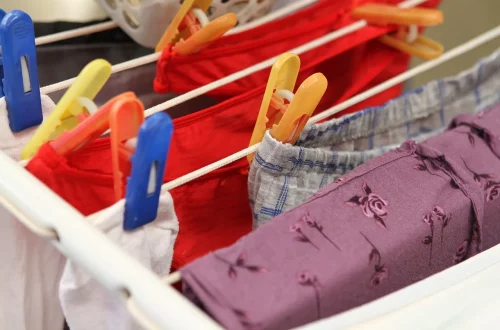
Understanding Dog Knot in Women: Causes and Solutions
Understanding the complexities of canine behavior can often lead to intriguing, yet sometimes perplexing, situations for pet owners. One such phenomenon that can arise during dog interactions is commonly referred to as the “dog knot.” This term, while somewhat colloquial, describes a specific condition that can occur during mating when a male dog and a female dog become temporarily physically intertwined. This occurrence can lead to confusion and concern among dog owners, especially those who may not be familiar with the natural mating behaviors of their pets.
The phenomenon of the dog knot is not just a simple case of mating; it involves a series of biological and physiological responses that are crucial for reproduction. Understanding the underlying causes, implications, and ways to manage this situation is essential for responsible pet ownership. As dogs engage in mating behavior, their instincts kick in, leading to various actions that may seem unusual or alarming to those observing.
Beyond the immediate concern of the dog knot, this topic opens a broader discussion about canine reproductive health, behavior, and the responsibilities of pet owners in managing their animals during breeding periods. Knowledge about such situations can help owners navigate the complexities of dog mating and ensure the well-being of both the male and female dogs involved.
What Causes the Dog Knot?
The dog knot is primarily a result of the mating process between male and female dogs. During mating, the male dog mounts the female and, upon ejaculation, the bulbus glandis, a structure at the base of the male’s penis, swells. This swelling causes the male to become physically locked with the female for a period of time, which can last anywhere from a few minutes to over half an hour. This biological mechanism serves a crucial purpose: it ensures that the male’s sperm is deposited effectively in the female’s reproductive tract, increasing the chances of successful fertilization.
In many cases, the dog knot occurs when both dogs are not only in the heat cycle but also in an environment that encourages mating. Factors such as the presence of other dogs, the right temperature, and even the emotional state of the dogs can influence this behavior. If a female dog is in heat, she releases pheromones that attract males. These pheromones can trigger a strong mating instinct in male dogs, leading to increased attempts to mate and, subsequently, the knotting phenomenon.
It is important to recognize that while the dog knot is a natural occurrence, it can also be a cause of distress for both the dogs and their owners. If not properly managed, the situation can lead to anxiety or even injury. Understanding the biological basis of the dog knot can help pet owners approach the situation with a sense of calm and knowledge, reducing the likelihood of panic or misunderstanding during this natural process.
How to Manage the Situation
When faced with a dog knot, the first step for pet owners is to remain calm. Dogs are sensitive to human emotions, and if an owner appears anxious or distressed, it may exacerbate the situation. Instead of attempting to separate the dogs forcefully, which can lead to injury for both parties, it is advisable to wait until the dogs naturally detach. This process can take time, so patience is essential.
In some cases, especially if the dogs are indoors or in an enclosed space, it might be beneficial to create a distraction. Offering treats or toys may help redirect the dogs’ attention, although this is not guaranteed to work. Owners should never attempt to pull the dogs apart, as this can result in serious injury to either or both dogs, particularly to the female.
If the knotting lasts longer than the typical duration or if either dog shows signs of distress, it may be prudent to consult a veterinarian. A vet can provide guidance on how to handle the situation safely and may also evaluate the dogs for any potential health concerns that could arise from the mating process.
Another important aspect of managing the dog knot is ensuring that both dogs are healthy and up to date on vaccinations, as mating can expose them to various health risks. Responsible pet ownership includes regular veterinary care, which can help minimize the health implications associated with breeding.
Additionally, pet owners should consider spaying or neutering their dogs to prevent unwanted litters and reduce the likelihood of such occurrences in the future. This decision should be discussed with a veterinarian to ensure it aligns with the dog’s health and lifestyle.
The Importance of Education for Dog Owners
Education is crucial for dog owners, particularly those who may be new to the responsibilities of breeding or caring for dogs during their mating cycles. Understanding canine behavior, including the mating process, can empower owners to make informed decisions that prioritize their pets’ health and well-being.
One of the most significant benefits of educating oneself about dog behavior is the ability to recognize when something is not right. For example, awareness of normal mating behaviors can help owners identify potential issues, such as aggression or anxiety, that may arise during the process. Being educated means being prepared to intervene appropriately when necessary, reducing the risk of injury or distress for the dogs involved.
Moreover, education can extend beyond just the mating process. It encompasses understanding the overall health, nutrition, and behavioral needs of dogs. Knowledge about proper training techniques, socialization, and health care can significantly improve the quality of life for dogs and their owners alike.
Participating in training classes, attending seminars, or joining local dog clubs can provide valuable resources for owners seeking to expand their knowledge. Online forums and community groups dedicated to dog care can also offer support and insights from experienced pet owners and breeders.
Ultimately, well-informed dog owners will be better equipped to make decisions regarding breeding, mating, and overall care. This not only benefits the individual dogs but also contributes to a greater understanding of canine behavior within the community.
When to Seek Professional Help
While many instances of the dog knot can be managed at home with patience and care, there are situations where seeking professional help becomes essential. If the knot lasts significantly longer than usual, or if either dog exhibits signs of pain or distress, it is crucial to consult a veterinarian immediately.
Additionally, if the female dog has a history of complications during mating or pregnancy, owners should seek veterinary advice beforehand. A vet can provide tailored recommendations on how to approach mating safely and effectively, ensuring the health of both the mother and her puppies.
Professional help may also be necessary if there are behavioral issues associated with mating. Some dogs may display aggressive behavior towards other dogs during the heat cycle, which can lead to dangerous situations if not properly managed. In such cases, a professional dog trainer or behaviorist can offer guidance on how to address these concerns effectively.
Furthermore, if an owner is considering breeding their dogs, it is wise to consult with a veterinarian or a breeding expert who can provide insights into the health and genetic considerations that come with responsible breeding practices.
In conclusion, understanding the dog knot and its implications requires a blend of knowledge, patience, and responsible pet ownership. While this natural occurrence can be concerning, proper education and management can help ensure the well-being of both male and female dogs during mating.
*Disclaimer: This article is for informational purposes only and does not constitute medical advice. Always consult with a veterinarian for health-related concerns regarding your pets.*




